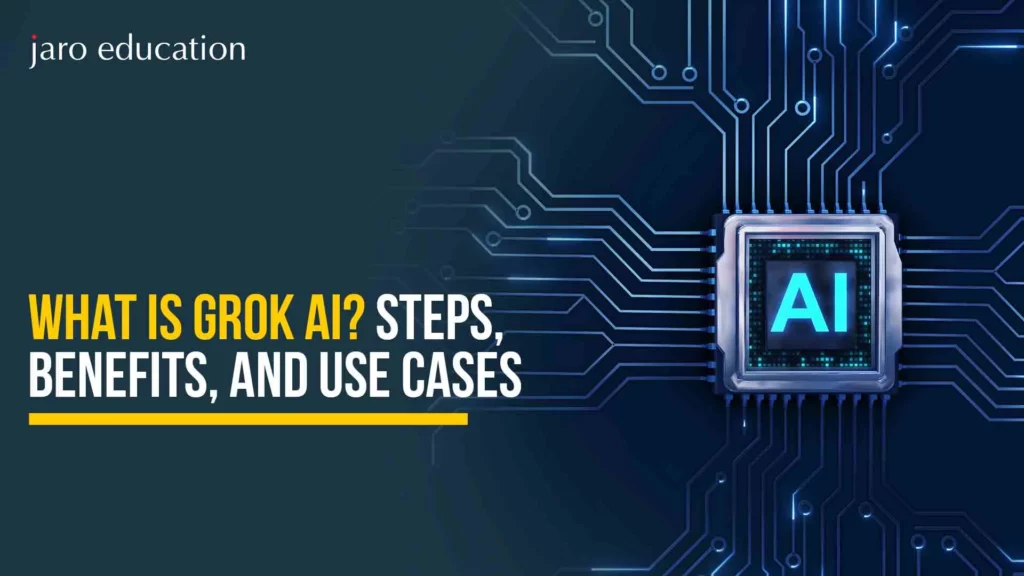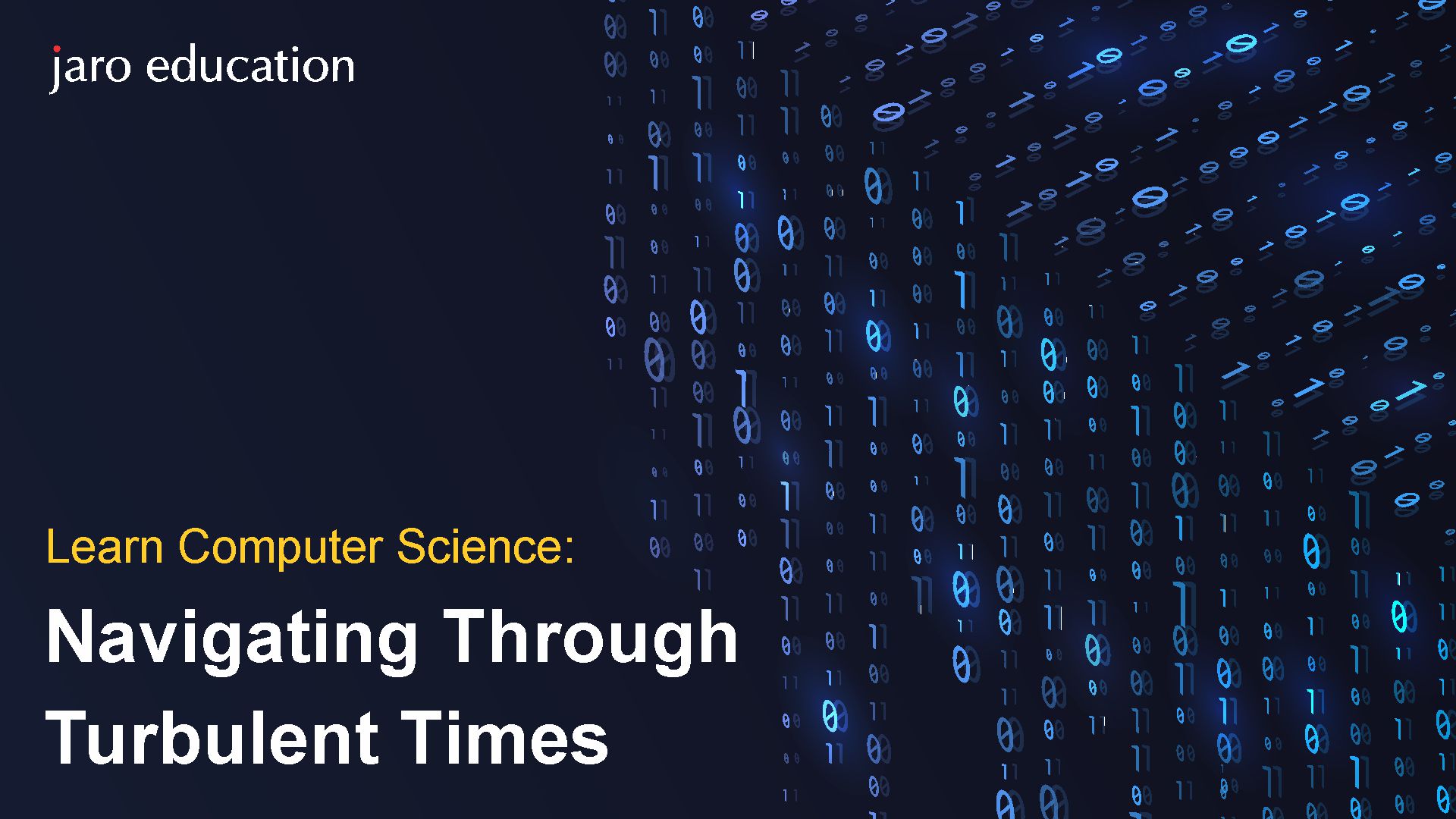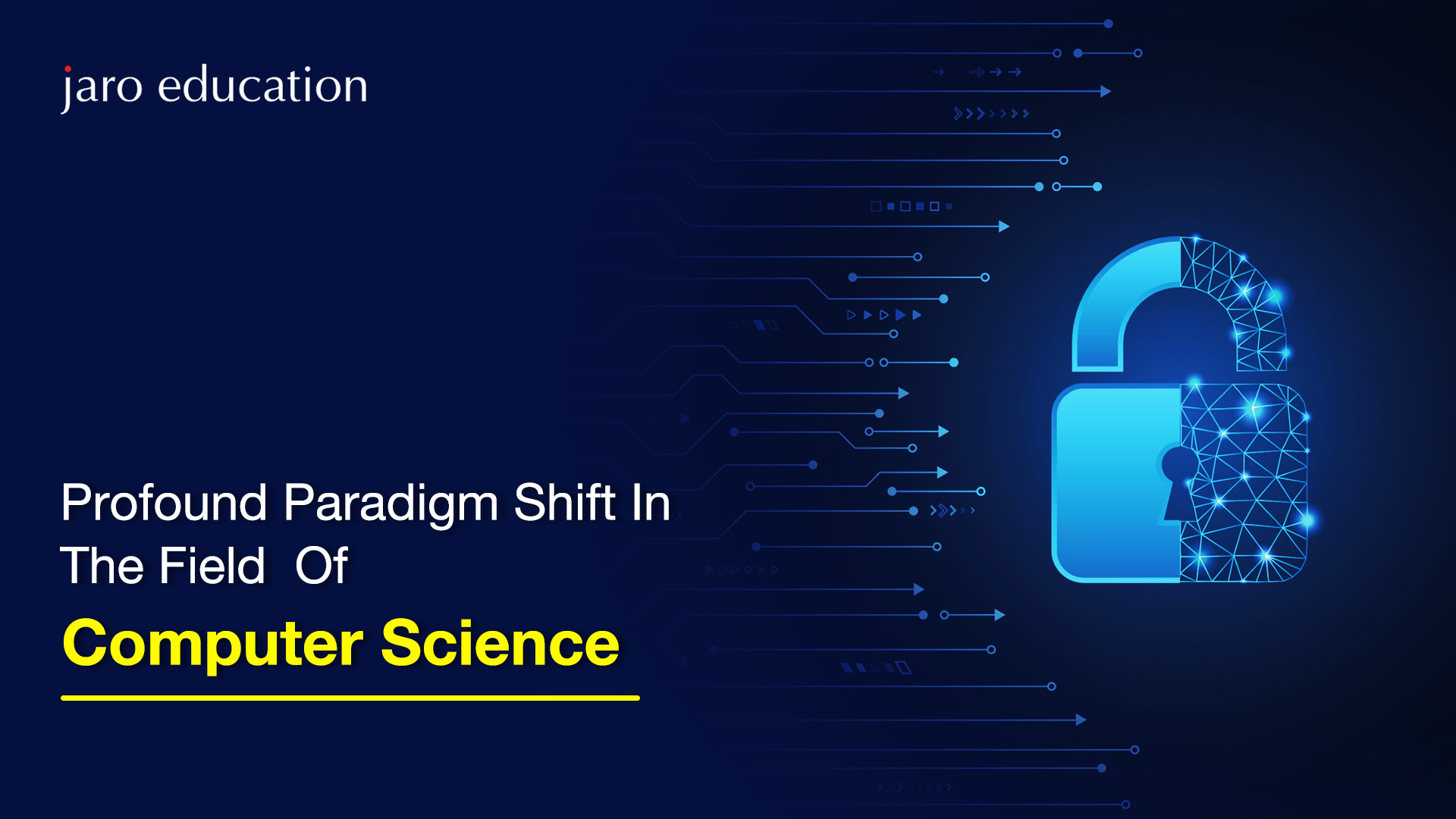What Is Computational Thinking? A Complete Beginner’s Guide
Table of Contents
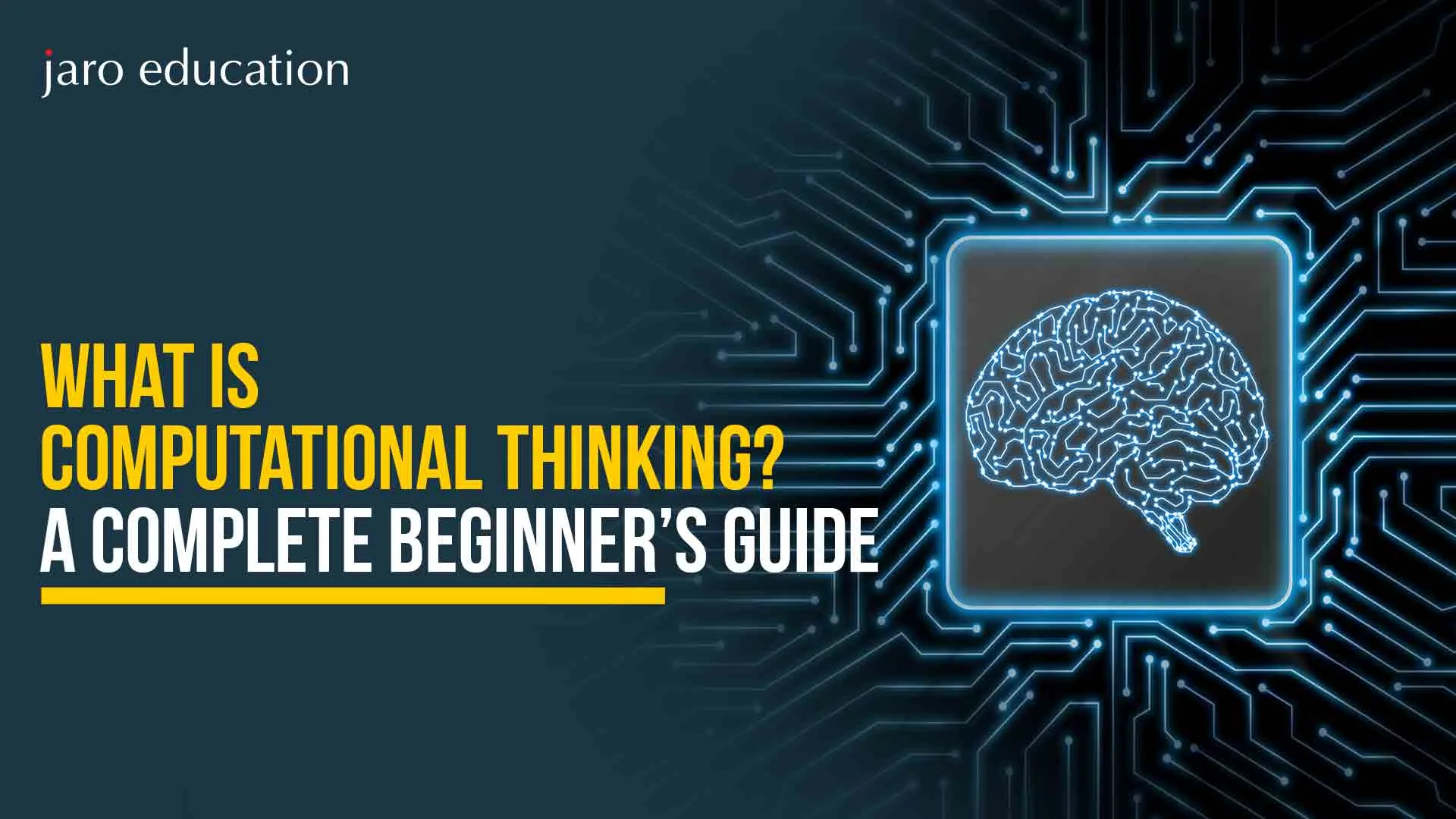
- jaro Education
- 10, May 2024
- 10:56 am
As technology advances, people outside of programming can now use computational thinking. More than ever, it helps students and employees solve problems at school, in the workplace, in hospitals, and at home. What, exactly, is computational thinking, and why should it matter today?
This blog explains computational thinking, looks at what people do with it, and explains why using these approaches prepares students and professionals for future problems.
What is Computational Thinking?
Computational thinking involves solving problems and draws on several techniques and ideas from computer science. It includes doing decomposition, recognizing patterns, abstracting, and using algorithmic thinking so that people can work through complex challenges step by step. Although programming is a big part of it, computational thinking helps people improve their critical and analytical skills in any field.
- In education, CT includes problem-solving methods where problems and solutions are expressed in ways that a computer can understand and execute.
- This includes automating tasks and using computers to explore, analyze, and understand both natural and artificial processes.
- Computational thinking skills involve a set of methods to solve complex problems, help learn in different subjects, and are crucial for thriving in today’s digital world.
- When we talk about computing, computer science, computational thinking, and programming, we use many terms.
- Computational Thinking Skills include methods from both computer science and computational thinking.
- While computer science is its academic field, computational thinking is a problem-solving approach that goes beyond specific tasks.
- Programming, meanwhile, is about creating instructions that a computer can follow, including fixing errors and using the code for problem-solving.
Four Components of Computational Thinking
No matter if computational thinking is used in computer science or other fields, it can be divided into four main parts.
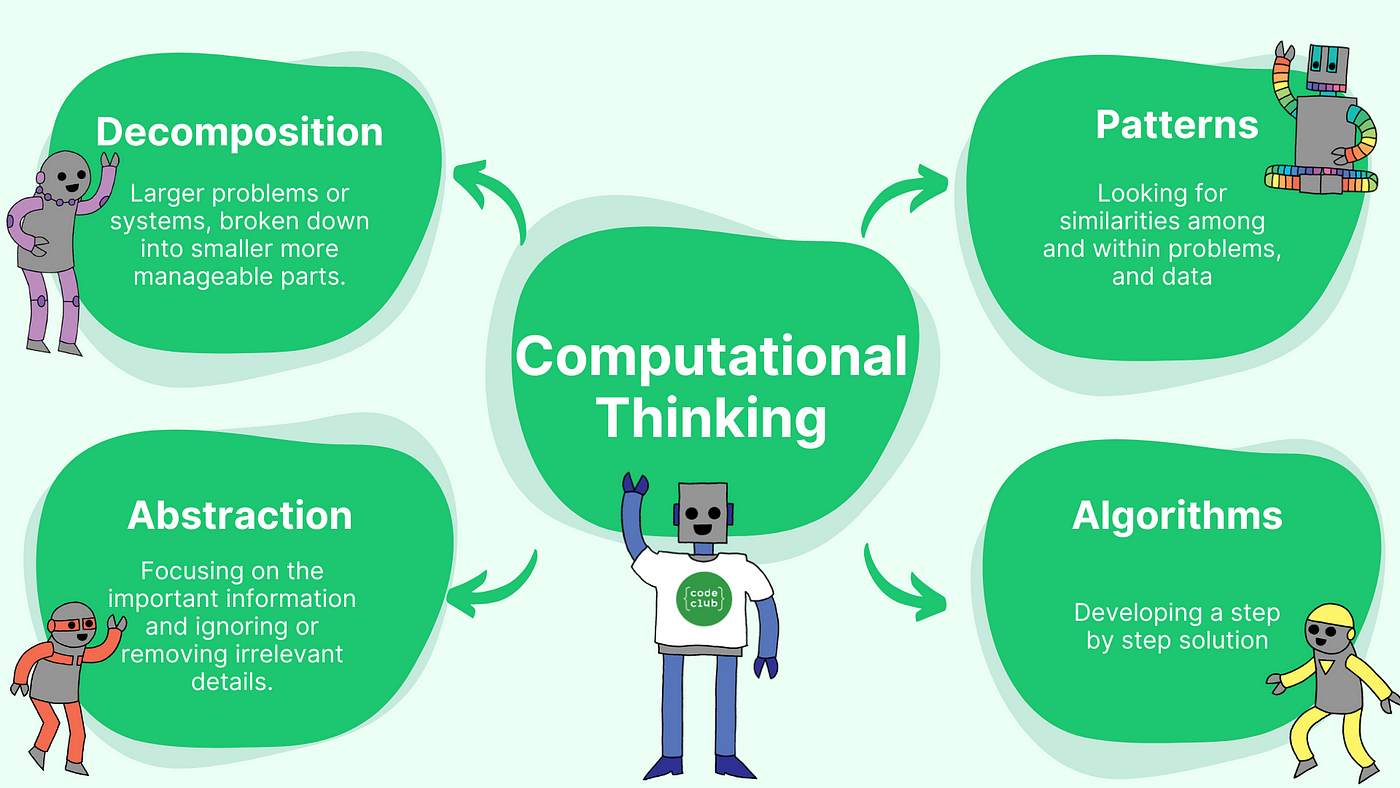
*Jaro Education
- Decomposition
Decomposition is the first step in computational thinking. It means breaking a complicated problem into smaller, easier-to-handle parts. This step is crucial because it helps us understand and approach the problem systematically. Decomposition simplifies the problem by splitting it into smaller pieces, making it easier to solve. Think of it as eating an elephant – you have to take it one bite at a time.
- Pattern Recognition
Pattern recognition is another important part of computational thinking. It involves spotting repeating patterns or connections among different parts of the problem. Pattern recognition aims twofold: to simplify the problem by finding similarities or differences among its details and to deepen our understanding of the main issue.
- Abstraction
Abstraction means taking out the most important information from each part of a problem. This helps in understanding what exactly needs to be solved to tackle the problem effectively. When students abstract, they can see how these important details might be useful in solving other parts of the same problem.
- Algorithmic Thinking
Algorithmic thinking is the last part of computational thinking. It involves creating a step-by-step plan to solve the problem systematically, ensuring a predictable and reliable result. In today’s computational thinking, especially in computer science, this plan usually involves a sequence of actions carried out by a computer. However, people can also use this process, either fully or partly.
Computational Thinking Examples
Different Industries Use Computational Thinking in Different Ways
Examples here illustrate how a computational approach benefits our everyday lives.
Medical Industry
Health professionals use computational thinking in many ways every day. The use of algorithms and data analysis allows doctors to handle disease diagnosis, medical image analysis, and look for useful trends in patient information, improving the success of treatments.
The use of computational thinking in healthcare supports both higher efficiency and better solutions to problems.
Supply Chain Management
Whether it be in factories or shops, companies in the supply chain sector rely heavily on computational thinking. Algorithms guide the best routes for sending goods, help predict supply versus demand, and optimize how goods are stored.
Science of Agriculture
People in agriculture, especially farmers, use computational thinking at work. It covers the planning and judgment needed for planting, crop rotation, herd management, irrigation, pest and disease prevention, and similar activities.
Space Exploration
Computational thinking is used by NASA and other agencies to design missions, consider different launches and investigate data sent by probes or satellites.
Energy Industry
Companies in the energy industry apply computational thinking to improve how energy is distributed. Our industry supports green energy such as in the manufacture and development of wind, solar, natural gas and geothermal energies.
Meteorology
Experts in meteorology rely on computer models to predict upcoming weather. To give accurate forecasts, these models use algorithms that look at many sets of atmospheric data.
Environmental Conservation
Those who work in conservation turn to computational thinking to study ecology data, manage wildlife and design ways to protect nature.
Importance of Computational Thinking in the Digital World
Computational thinking holds significant importance in our increasingly digitalized world. Let’s explore its significance:
Why This Matters Now in the Digital Age:
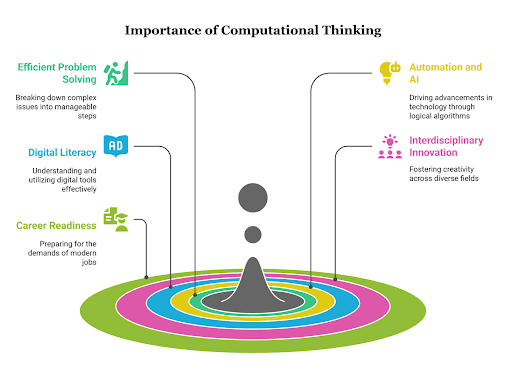
- Handling Difficult Problems in an Efficient Way
Computational thinking helps people separate large problems and handle them step by step, something everyone must do nowadays.
- Giving strength to Automation and AI
Artificial intelligence, machine learning and robotics all work using logical algorithms and proper decision-making. Developing, using or being involved with these technologies begins with the mindset taught by CT.
- Promoting Digital Literacy
Having digital literacy by 2025 is more about grasping their functions than only using them. Computational thinking helps us better understand the important technologies we use today.
- Leading New Ideas in Disciplines
CT helps educators design personalized tools for students and supports logistics managers in improving supply chains because it brings together experts from different backgrounds.
- Having Career Readiness and Learning throughout Your Life
As modern jobs need analysis and technology, everyone is relying on CT to keep up and adjust to new demands.
The World Economic Forum predicts in its Future of Jobs Report that the leading 9 of the top 10 job skills by 2025 are based on solving problems, thinking critically and using technology—all skills built on computational thinking.
Difference in Computational Thinking and Computer Science
The distinction between computational thinking and computer science is often blurred. Some view computer science solely as programming, limiting its perceived career prospects. This misconception neglects the ongoing intellectual challenges and diverse applications within the field.
Computational thinking presents a broad framework guiding educators and practitioners to reshape public perception. Here are two key messages computational thinking in computer science conveys.
Continued Intellectual Challenges: Significant scientific problems await exploration and resolution. Our curiosity and creativity dictate the problem and solution domains.
Versatility of Computer Science: Similar to majors in English or mathematics, computer science opens pathways to diverse careers—from medicine and law to business, politics, sciences, engineering, and the arts.
Steps to Implement Computational Thinking
To make predictions using computational thinking, you would start by defining three essential steps in relation to the problem and its solution:
- Problem Specification: Begin by analyzing and precisely defining the problem, setting specific criteria for its solution. Computational thinking involves breaking down complex issues into more manageable sub-problems through deductive or probabilistic reasoning, a process known as problem decomposition. This approach often utilizes abstraction and pattern recognition, crucial for creating models and simulations.
- Algorithmic Expression: Next, identify an algorithm—a precise sequence of steps—to solve the problem using appropriate data representations. This step employs inductive thinking, enabling the transfer of a specific problem to a broader class of similar problems. This phase, also known as algorithmic thinking, can be divided further into imperative (procedural or modular) and declarative (functional) approaches to algorithmic solutions.
- Solution Implementation & Evaluation: Finally, implement the solution and systematically evaluate its correctness and efficiency. This stage includes assessing whether the solution can be automated or extended to address other types of problems.
Launch a Successful Tech Career with BCA at Parul University
Parul University, recognized as the Youngest Private State University of Gujarat, offers a transformative Online Bachelor of Computer Applications (BCA) program designed to empower students with foundational and advanced knowledge in computer applications. The Parul University Online BCA program is tailored for individuals aiming to build a strong career in the dynamic fields of IT, software development, and technology innovation. Through a flexible and engaging online learning environment, students gain expertise in programming languages, web development, database management, and emerging technologies, equipping them to meet the demands of the ever-evolving digital world.
Programme highlights:

Jaro Education – Your Trusted Partner in Career Counseling
Jaro Education is the leading online company for higher education in India. As a leader in its field, the large Edtech firm has introduced new ideas and was the first to launch executive & online education.
For more than 3 lakh professionals, Jaro Education has brought major career changes in the last 15+ years, thanks to its unique expertise in executive education and 23+ learning centers in India, Singapore, and the USA. It aims to support entrepreneurs as well as working professionals from every industry and level by providing appropriate executive courses. Being known for transforming online education in India, Jaro Education works with top institutes to offer over 150+ management, technology, and techno-functional programs.
Conclusion
Computational thinking is a comprehensive approach to problem-solving that entails breaking down big problems into smaller, more manageable components. It is about discovering patterns, understanding relationships, and developing efficient methods to address problems effectively. This skill is not confined to computer science; rather, it crosses disciplinary borders, influencing instructional methods and research practices in a variety of subjects.
In today’s fast-changing digital landscape, computational thinking has become increasingly important. It enables people to navigate and prosper in our complicated culture, where technological improvements touch every part of our lives. By incorporating computational thinking into teaching processes, educators may provide students with the critical abilities required to assess issues, generate new solutions, and adapt to an ever-changing world.
Frequently Asked Questions
Computational thinking is a problem-solving approach that involves breaking down complex issues, identifying patterns, creating algorithms, and evaluating solutions. It helps individuals solve problems in a structured and logical way, much like a computer would.
It equips learners and professionals with the skills needed to understand and solve problems efficiently in today’s technology-driven world. It’s foundational for fields like computer science, data analysis, AI, and even everyday decision-making.
No, computational thinking is a universal skill. It is valuable in education, business, science, engineering, healthcare, and even the arts—anywhere logical problem-solving and critical thinking are required.
The main characteristics include:
- Decomposition: Breaking down problems
- Pattern Recognition: Identifying similarities
- Abstraction: Focusing on important details
- Algorithm Design: Creating step-by-step solutions
- Evaluation & Automation: Refining and automating the process
Students can build these skills through activities like coding, math puzzles, robotics, algorithmic games (like Sudoku), and problem-solving exercises that encourage logical analysis and creativity.


